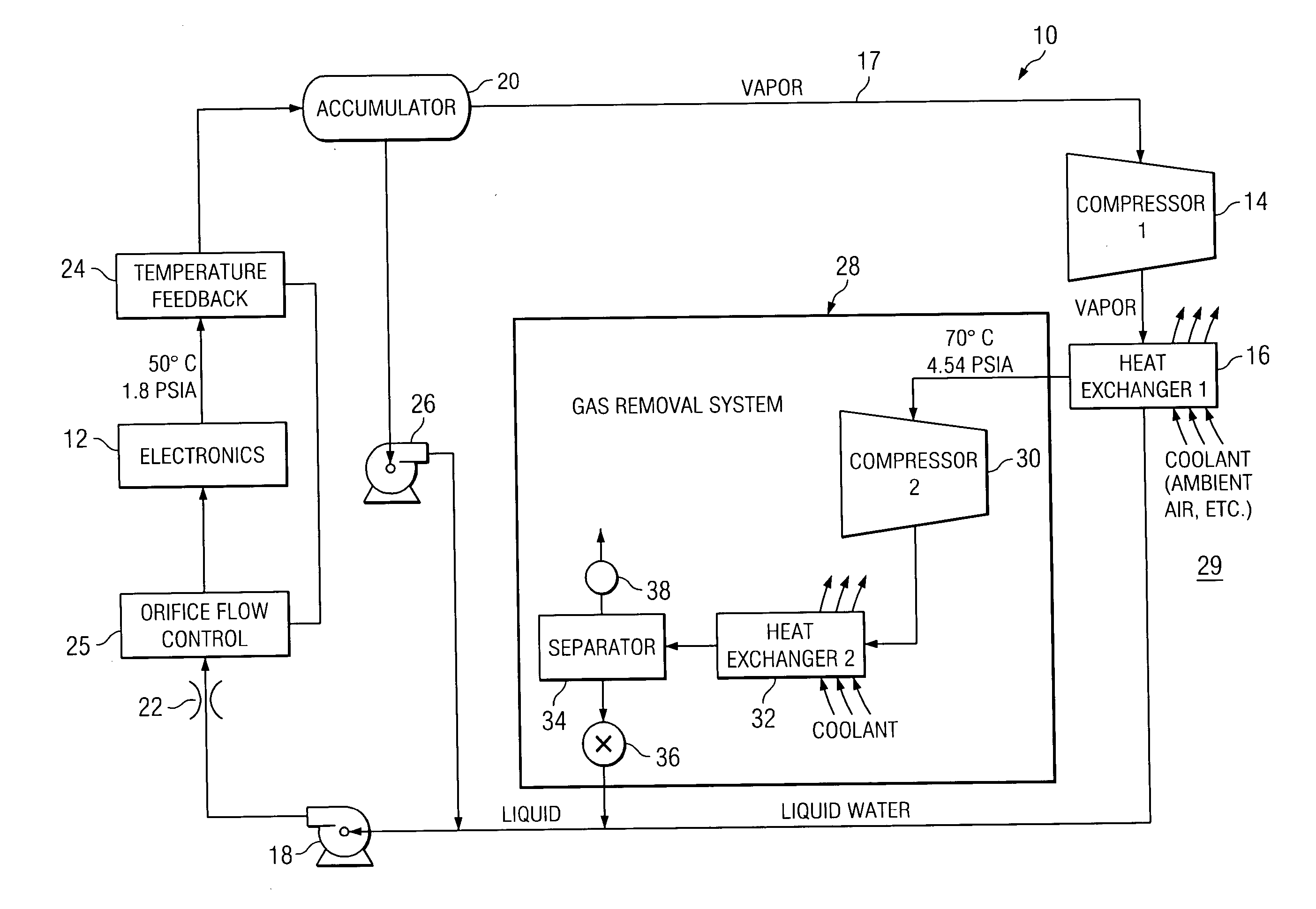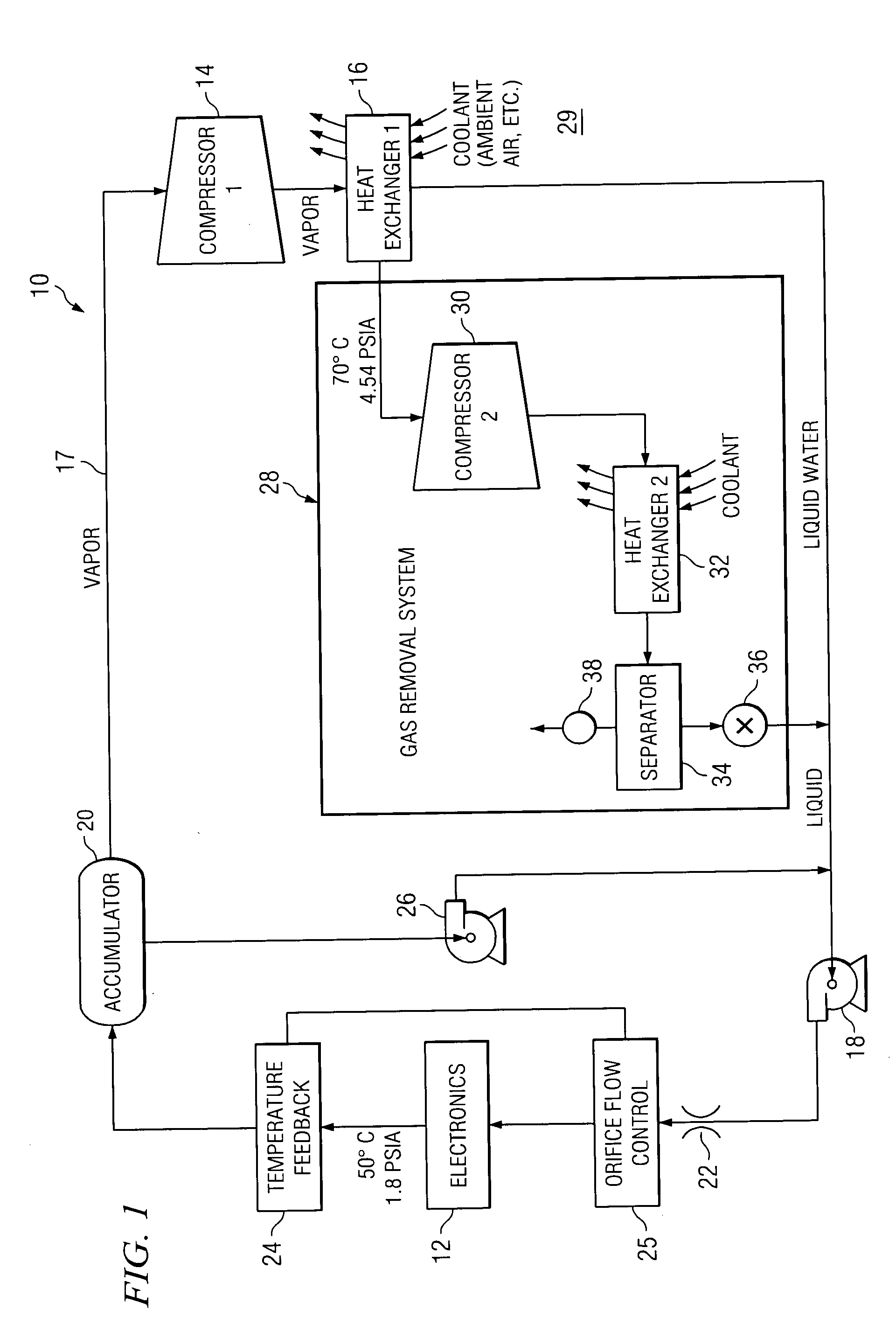Sub-ambient refrigerating cycle
a sub-ambient and refrigerating cycle technology, applied in the field of cooling techniques, can solve the problems of large heat generation, large consumption of power, large size of suitable refrigeration units, etc., and achieve the effects of less power, large cooling capacity, and high degree of heat transfer
- Summary
- Abstract
- Description
- Claims
- Application Information
AI Technical Summary
Benefits of technology
Problems solved by technology
Method used
Image
Examples
Embodiment Construction
[0011] Example embodiments of the present invention and its advantages are best understood by referring to FIGS. 1 and 2 of the drawings, like numerals being used for like and corresponding parts of the various drawings.
[0012]FIG. 1 is a block diagram of a system 10 for cooling according to the teachings of the invention. As illustrated, system 10 includes heat-generating structure 12, which in this example is electronic circuitry and, in particular, is a phased array antenna. Although electronic circuitry is used as an example for heat-generating structure 12, system 10 may be used to cool any suitable heat-generating structure, including use as a home cooling system. In that example, an electronic cold plate may be in thermal communication with both the phased array antenna and refrigerant within a refrigeration loop 17, as described below. System 10 also has a compressor 14 and a heat exchanger 16 included within the refrigeration loop 17.
[0013] A refrigerant within cooling loo...
PUM
 Login to View More
Login to View More Abstract
Description
Claims
Application Information
 Login to View More
Login to View More - R&D
- Intellectual Property
- Life Sciences
- Materials
- Tech Scout
- Unparalleled Data Quality
- Higher Quality Content
- 60% Fewer Hallucinations
Browse by: Latest US Patents, China's latest patents, Technical Efficacy Thesaurus, Application Domain, Technology Topic, Popular Technical Reports.
© 2025 PatSnap. All rights reserved.Legal|Privacy policy|Modern Slavery Act Transparency Statement|Sitemap|About US| Contact US: help@patsnap.com



